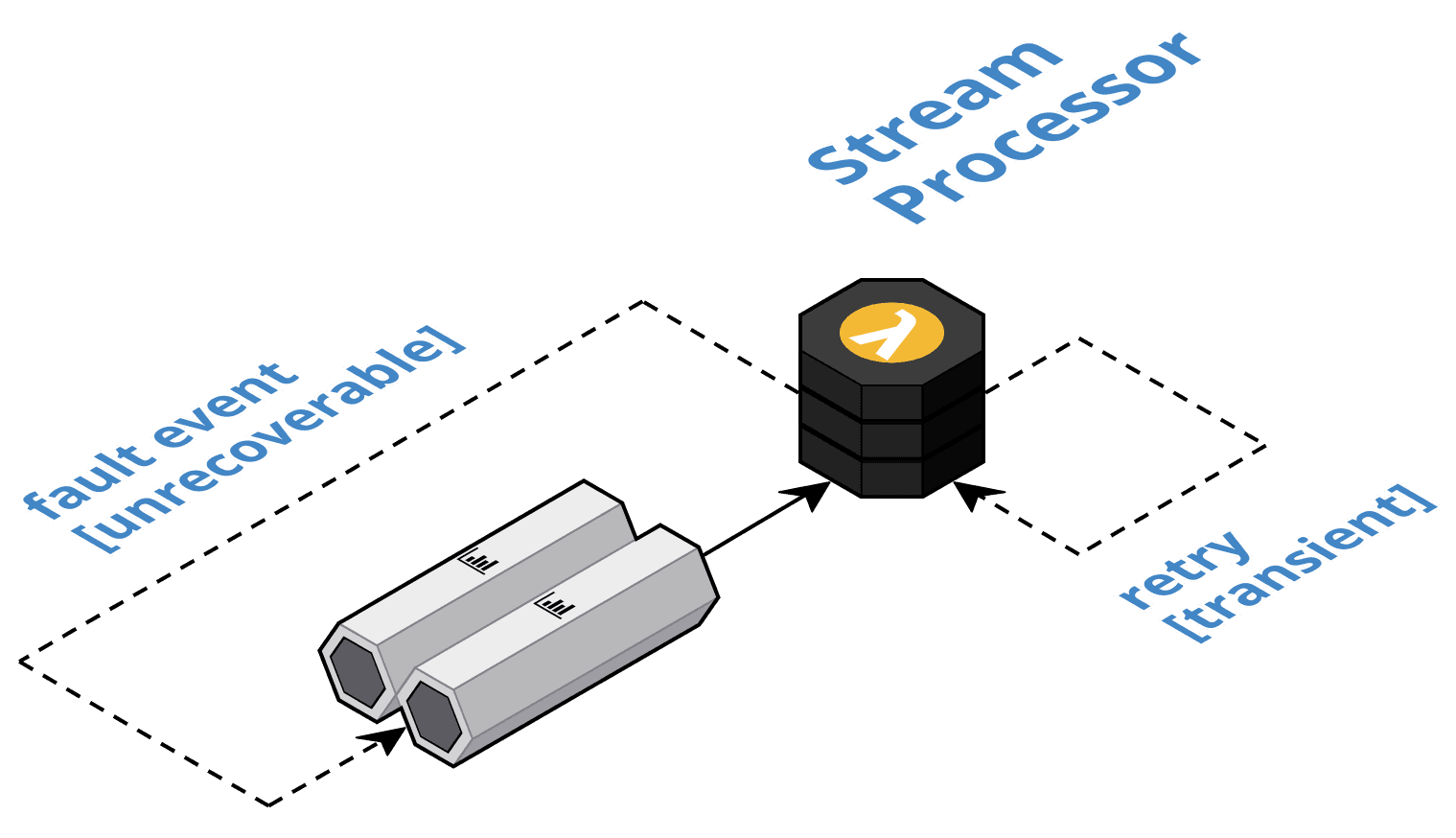Stream Circuit Breaker
Control the flow of events in stream processors so that failures do not inappropriately disrupt throughput by delegating the handling of unrecoverable errors through fault events.

Context, problem, and forces
Our reactive, cloud-native systems are composed of bounded isolated components which rely on event streaming for inter-component communication. We have chosen to leverage value-added cloud services to implement our event streaming and stream processors. This empowers self-sufficient, full-stack teams to focus their efforts on the requirements of their components, but stream processor logic will still encounter bugs because developers are human. We endeavor to eliminate all inter-component synchronous communication, but stream processors ultimately need to perform intra-component synchronous communication to component resources. These resources can become unavailable for brief or extended periods.
Stream processors consume and process events in micro-batches and create...



























































